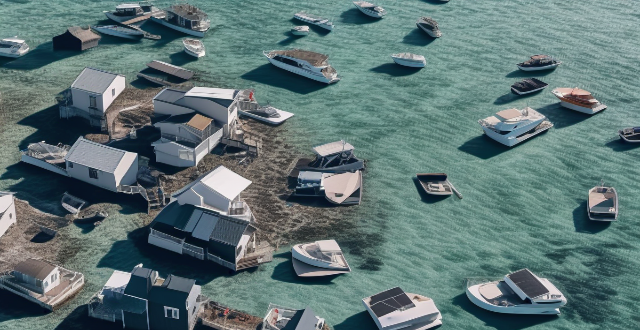Climate change causes losses and damages in various ways, including environmental impacts such as extreme weather events, sea level rise, and biodiversity loss; societal impacts such as health risks, food security issues, and water scarcity; and economic impacts such as infrastructure damage, increased insurance costs, and labor market disruptions. Addressing these challenges requires coordinated efforts to mitigate greenhouse gas emissions and adapt to the changing climate.

How Climate Change Causes Losses and Damages
Climate change is a global phenomenon that has far-reaching impacts on the environment, society, and economy. It causes losses and damages in various ways, which can be broadly categorized into the following areas:
Environmental Impacts
Extreme Weather Events
- Heatwaves: High temperatures can lead to heat-related illnesses, crop failures, and increased energy demand for cooling.
- Hurricanes and Typhoons: These storms cause coastal flooding, damage to infrastructure, and disruption of ecosystems.
- Droughts: Prolonged dry spells can result in water scarcity, reduced agricultural yields, and wildfires.
- Floods: Heavy rainfall can cause riverine and flash floods, leading to soil erosion, loss of habitats, and contamination of water sources.
Sea Level Rise
- Coastal Erosion: Rising sea levels contribute to shoreline retreat, beach erosion, and loss of coastal wetlands.
- Saltwater Intrusion: As sea levels rise, saltwater can intrude into freshwater sources, affecting drinking water supplies and agricultural productivity.
Biodiversity Loss
- Habitat Changes: Altered temperature and precipitation patterns can change the distribution of species, leading to habitat loss and fragmentation.
- Species Extinction: Some species may not be able to adapt quickly enough to changing conditions, leading to their extinction.
Societal Impacts
Health Risks
- Heat-Related Illnesses: Heatwaves can exacerbate health problems such as heat exhaustion, heat stroke, and respiratory issues.
- Vector-Borne Diseases: Warmer temperatures can expand the range of disease-carrying insects like mosquitoes and ticks, increasing the risk of diseases like malaria, dengue fever, and Lyme disease.
Food Security
- Reduced Agricultural Yields: Changes in temperature and precipitation patterns can negatively affect crop growth and livestock production.
- Food Price Volatility: Extreme weather events and supply chain disruptions can lead to fluctuations in food prices, making it difficult for vulnerable populations to access adequate nutrition.
Water Scarcity
- Decreased Freshwater Availability: Droughts and altered precipitation patterns can reduce the availability of freshwater resources for drinking, agriculture, and industry.
- Water Quality Issues: Flooding and pollution from extreme weather events can contaminate water sources, posing health risks to humans and wildlife.
Economic Impacts
Infrastructure Damage
- Transportation Systems: Floods, hurricanes, and other extreme weather events can damage roads, bridges, airports, and ports.
- Energy Infrastructure: Power outages due to extreme weather can disrupt energy supply chains, affecting industries that rely on consistent power sources.
Insurance Costs
- Increased Premiums: As climate-related risks become more frequent and severe, insurance premiums for properties located in high-risk areas may increase.
- Reinsurance Market Strain: The reinsurance market, which provides coverage for insurance companies, may face financial strain due to increased claims from climate-related disasters.
Labor Market Disruptions
- Displacement of Workforce: People may be forced to relocate due to sea level rise or other climate-induced displacements, affecting labor markets and economic productivity.
- Occupational Hazards: Workers in certain industries, such as agriculture and construction, may face increased occupational hazards due to extreme heat and other climate-related factors.
In conclusion, climate change causes losses and damages through a complex interplay of environmental, societal, and economic factors. Addressing these challenges requires coordinated efforts at local, national, and international levels to mitigate greenhouse gas emissions and adapt to the changing climate.